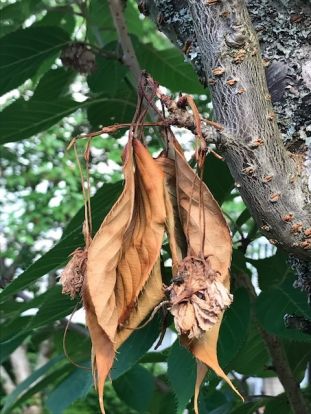Arbor-wellness: Brown Rot Blossom Blight
Flowering cherries are one of the favorite sights in spring. the light pink or white flowers fill the spring landscape and say goodbye to Winter and welcome to Spring. for most in the Northwest west, it’s our favorite spring blooming tree.
One of the most serious problems that can affect flowering cherries and other flower fruit trees is a disease called Brown Rot Blossom Blight. This disease affects both the flower and the twig ends, leaving them brown and curled. These dead ends of the branches tend to hang on a long time so a severely affected tree looks quite distressed in the landscape. Unfortunately, this disease needs to be treated before flowers emerge in the spring, so being proactive is very important. We also know that soil conditions can play a big role in reducing Brown rot problems.
My flowering cherries don’t look good, they have lots of dead tips and brown flowers, is it dying?
It’s not dying, but it probably has a serious disease that is important to treat before it spreads too much. It is called Brown rot blossom blight and is common in the Pacific Northwest and places that have moist spring times. Unfortunately, we can’t cure the dead tips, but we can take steps to prevent the problem if we treat early enough.
Does it spread to other trees, too?
Besides cherries, it is common on flowering and fruiting peaches, plums, nectarines, and apricots. In the worst springs, quince and a few other trees can get it too.
What can it do about it now?
The best thing is to prune back the dead twigs in the summer and remove any dead fruit that is on the ground. Throw these pruning’s away, because they hold spores that can re-infect next year.
How do I prevent it next year?
We can treat your trees before bloom season to reduce the number of infections and help the tree combat the problem internally, without putting products in the air. But this needs to happen before bloom season starts.
Are there organic or other solutions.
There are, but these involve treatments on the tree itself. Timing is important though and it usually takes several treatments to be successful. Also, we can look at the soil conditions. When certain minerals are in short supply in the soil, they can make your tree more susceptible to the disease. Proper pruning and the right time and keeping your trees healthy can make a real difference too.
If you are concerned about Brown rot blossom blight on your trees, fill out the form below to contact your Arborwell arborist and schedule an inspection.
blight, blossom blight, brown rot, browning, plant health care
